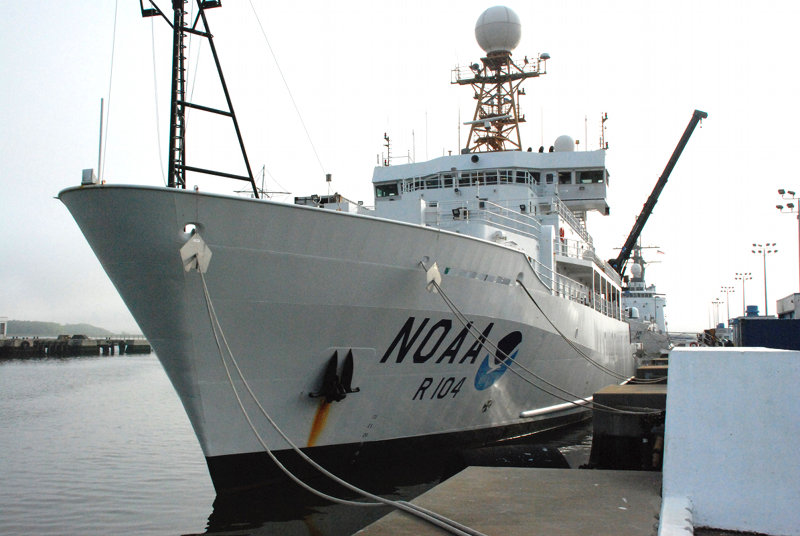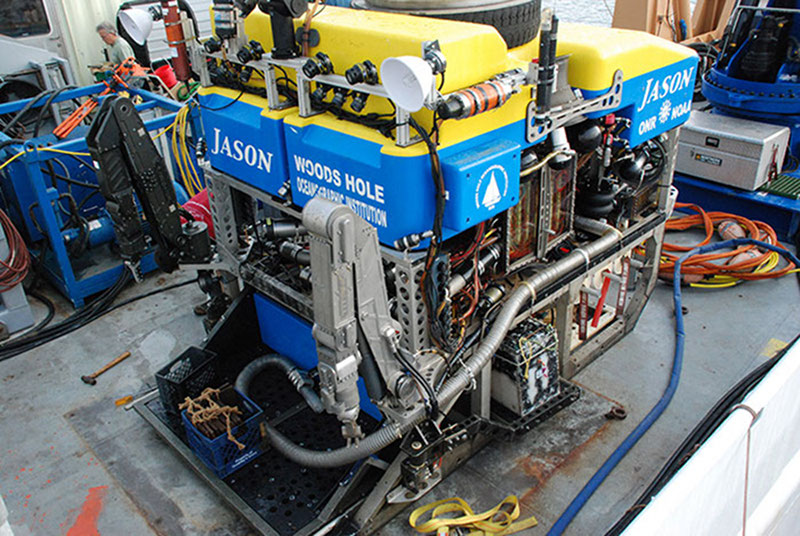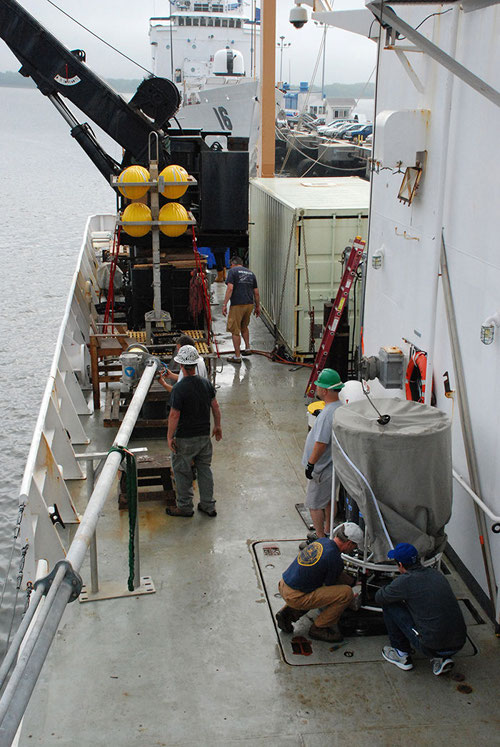
By James Connors, Web Coordinator - NOAA Office of Ocean Exploration and Research
April 30, 2013

NOAA Ship Ron Brown docked in Charleston, South Carolina, a few hours prior to setting off. Image courtesy of Deepwater Canyons 2013 - Pathways to the Abyss, NOAA-OER/BOEM/USGS. Download larger version (jpg, 1.3 MB).
From the moment the NOAA Ship Ron Brown left the pier in Charleston, South Carolina, this morning, life has been moving at a very rapid pace.

The Jason remotely operated vehicle (ROV) sits on the aft deck of the Ron Brown. The ROV was eventually strapped down to the deck before departure. A 10-man team from Woods Hole Oceanographic Institution is on hand to operate Jason. Image courtesy of Deepwater Canyons 2013 - Pathways to the Abyss, NOAA-OER/BOEM/USGS. Download larger version (jpg, 2.0 MB).
After breakfast and many introductions among the science team and crew, the ship got underway on schedule at 10:00 am Eastern Time. The bleak grayness and high humidity in Charleston gave way to sunny and clear skies as we headed further offshore toward the first and main target of interest – Norfolk Canyon.
The transit toward the canyon affords some downtime, the “calm before the storm” of day and night operations planned in the next several days. The time will be used primarily to prepare sampling and data-collecting tools, ranging from CTD arrays, trawls, and coring devices, to the massive Jason remotely operated vehicle and its control van.
An initial meeting with the ship’s NOAA Corps officers stressed important safety regulations and features of the ship, as well as the unique pace and scope of this project, which will generate what they termed a “high operational tempo.” Having a multi-disciplinary group of scientists on board means conducting operations day and night, in essence a 24-hour work schedule. Jason will be making 16-hour dives from 4:00 am to 8:00 pm nearly every day (barring overly rough seas) to record and sample biological targets within the canyon.

Crew members prepare the CTD rosette, which on this expedition will also carry a coring device to physically sample the seafloor. The yellow spheres at top-left are part of a benthic lander. Image courtesy of Deepwater Canyons 2013 - Pathways to the Abyss, NOAA-OER/BOEM/USGS. Download larger version (jpg, 1.5 MB).
Some will get a break when Jason is recovered, but other scientists’ work will just be starting; trawling, CTD casting, and core sampling will all occur between 8:00 pm and 4:00 am. Time at sea is relatively rare for many of these scientists, and growing rarer every year, so every effort is made to maximize the use of the NOAA Ship Ron Brown and its capabilities—even if it means less time sleeping, relaxing, or otherwise enjoying being out at sea.
The remainder of the day was highlighted by a successful test launch of Jason and its stabilizing platform, Medea. The two platforms will undergo one final testing and calibration on site at Norfolk Canyon before their first dive. The tempo of activity on our first day at sea was indeed quick and promises to be even more so once the real work gets underway.